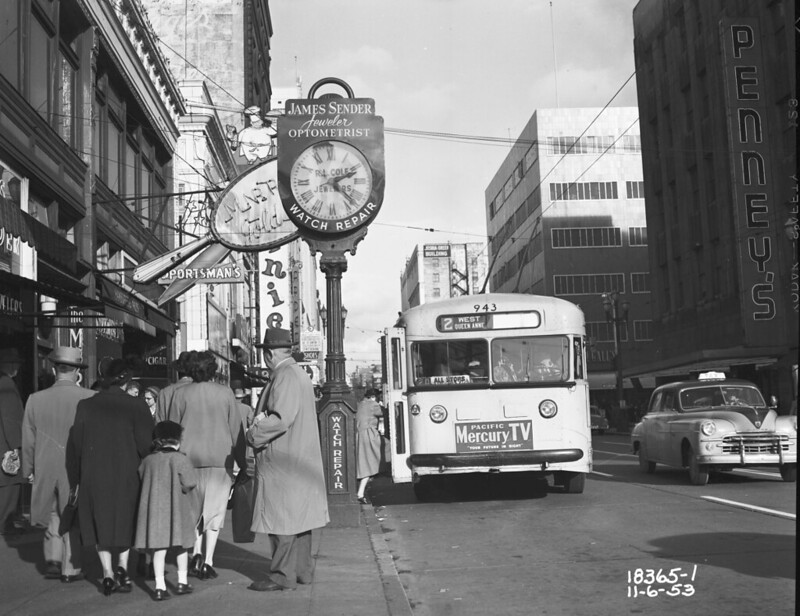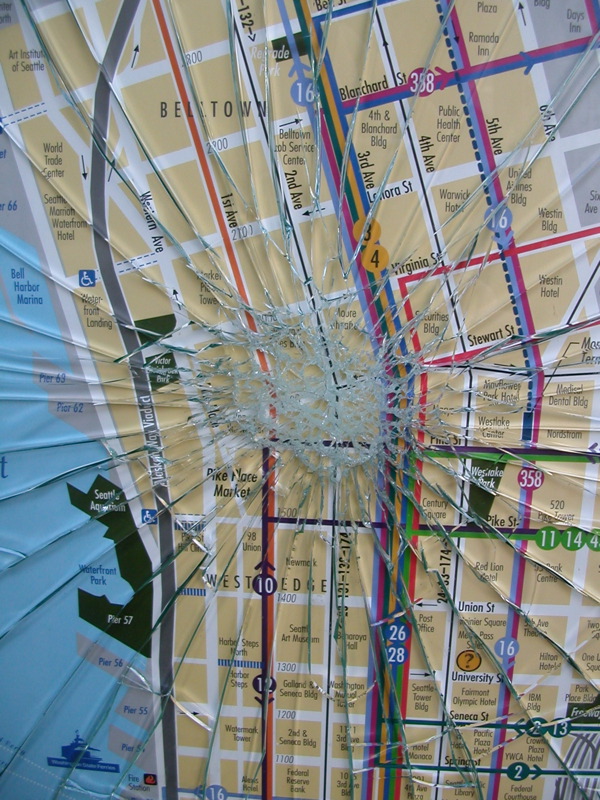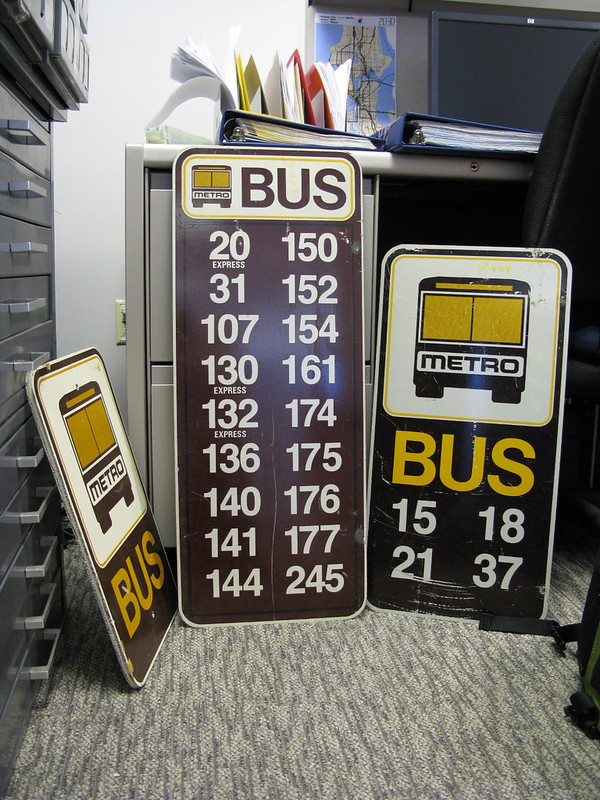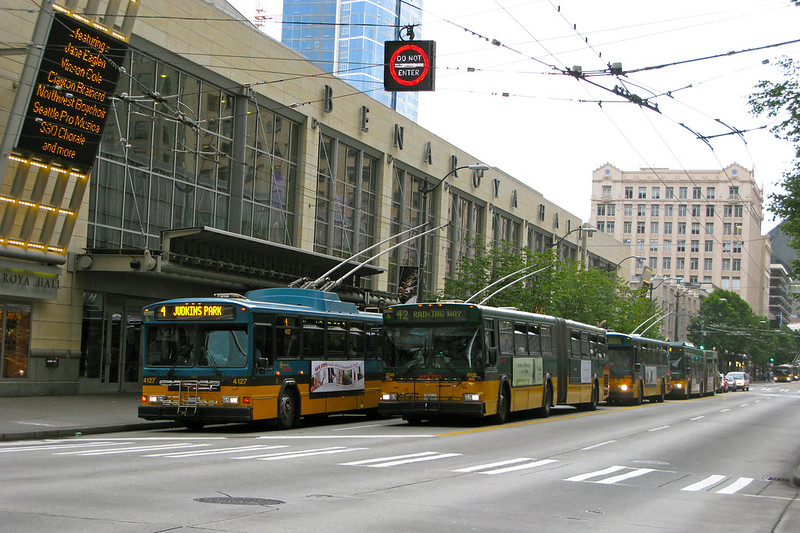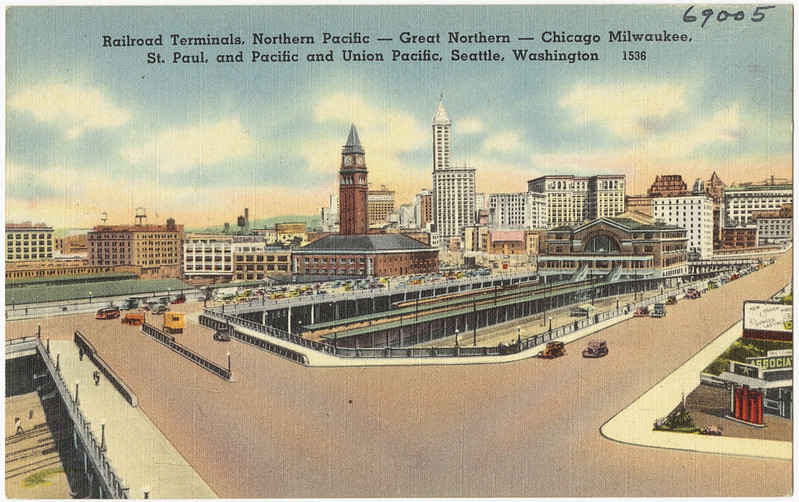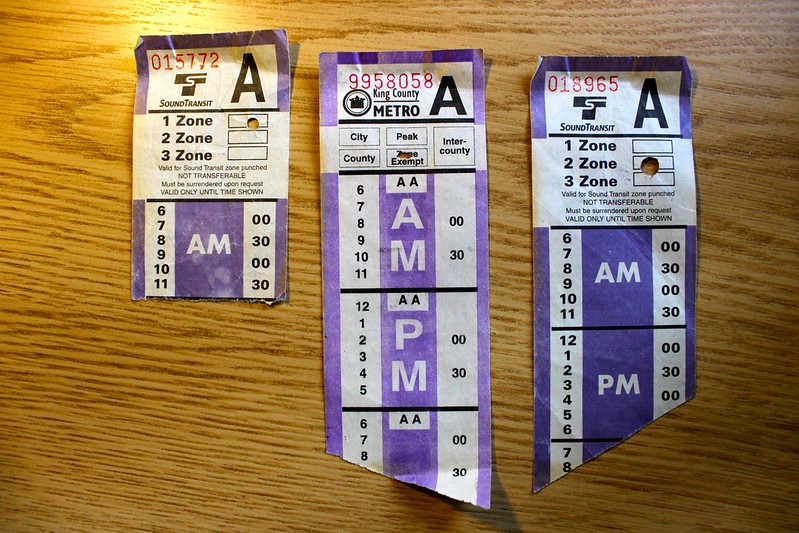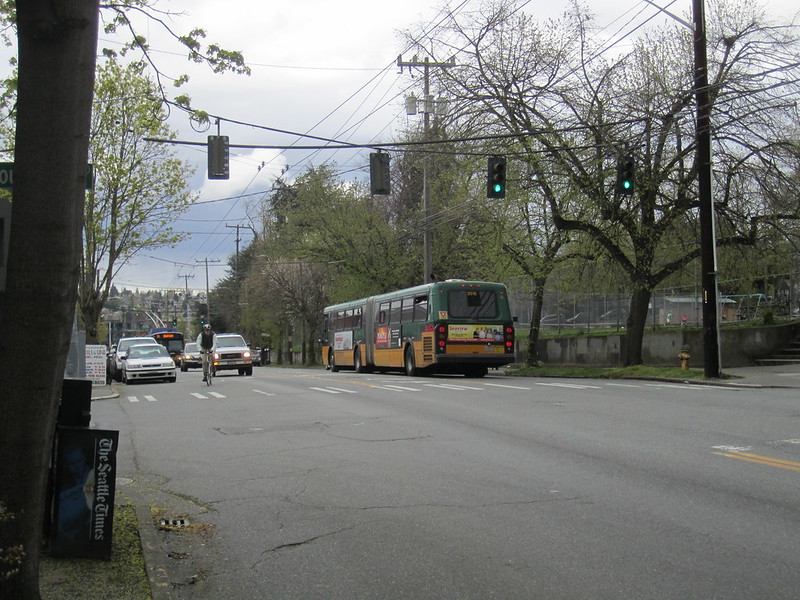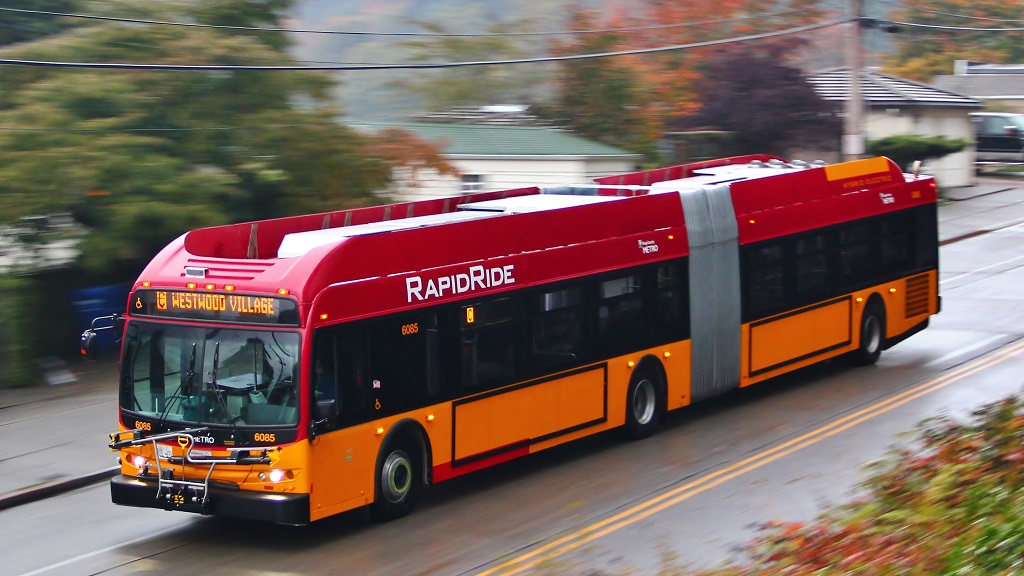
“King County Metro Rapid Ride New Flyer DE60LFR 6085” by S.S. Sol Duc is licensed under CC BY-SA 3.0.
I recently received feedback critical of the Seattle transit network restructure that I previously proposed. It raised concerns about overcrowding during peak travel times—those associated with the commutes for a traditional 9 to 5 office job. My restructure provides uniform frequency on each route throughout the day. Presently, King County Metro and Sound Transit run extra trips beyond the normal frequencies on some routes during these times. In theory, riders distribute themselves among the additional trips, increasing the capacity of the system at the heaviest-traveled times.
I understand this point, but still think it should be questioned. Even with additional trips, a lot of people could still want to travel at the same time, resulting in a crowded bus, followed by a nearly-empty one. Even in that scenario, though, it’s nice that people who can’t or choose not to board the packed bus don’t have to wait as long until the next one comes. I also feel that Seattle’s local transit agencies don’t approach the crowding problem with mechanisms beyond frequency. Different vehicle layouts and passenger arrangement staff can better utilize limited space. Nevertheless, I must acknowledge that there is a physical limit to how many people can fit in a single vehicle. In my proposal, I tried to account for this by giving the Link 1-Line 8-minute frequency and select other routes, including Rapid Rides, 10-minute frequency, on account of their popularity.
[Read More]